Non Surgical Otoplasty Turkey
Non Surgical Otoplasty is a cosmetic surgery performed under local anesthesia and does not take a long time. Prominent ear does not mean that a person has ears that are bigger than normal. The main goal of this procedure is to eliminate ear abnormalities.
Otoplasty Turkey Cost
Non surgical otoplasty Turkey price 3000 euros. This includes stay and transfers. Rates are valid for 2024. Contact us at +905442413244 on WhatsApp for more info.
Operation record
| Operation time | 30 minutes |
| Type of anesthesia | Local anesthesia (only the ear will be numbed) |
| Operation location | Clinic |
| Return to work | The next day |
| Full recovery | One month |
| Pain | Minimal or none |
| Hair band | Full for the first 3 days, and during sleep for 15 days |
| Likelihood of needing a revision | 99.9% chance it won’t be needed |
| Check-ups | On the 2nd day, 30th day, 6th month, and 1 year |
| Length of stay in Istanbul | 1 day |
| Bruising and swelling | Slight and barely noticeable |
| Scar | No scar will be left |
| First shower | On the 3rd day |
| Bleeding | Very rare |
| Risk of reopening | 2% |
| Impact on hearing | There will be no positive or negative impact |
Before After
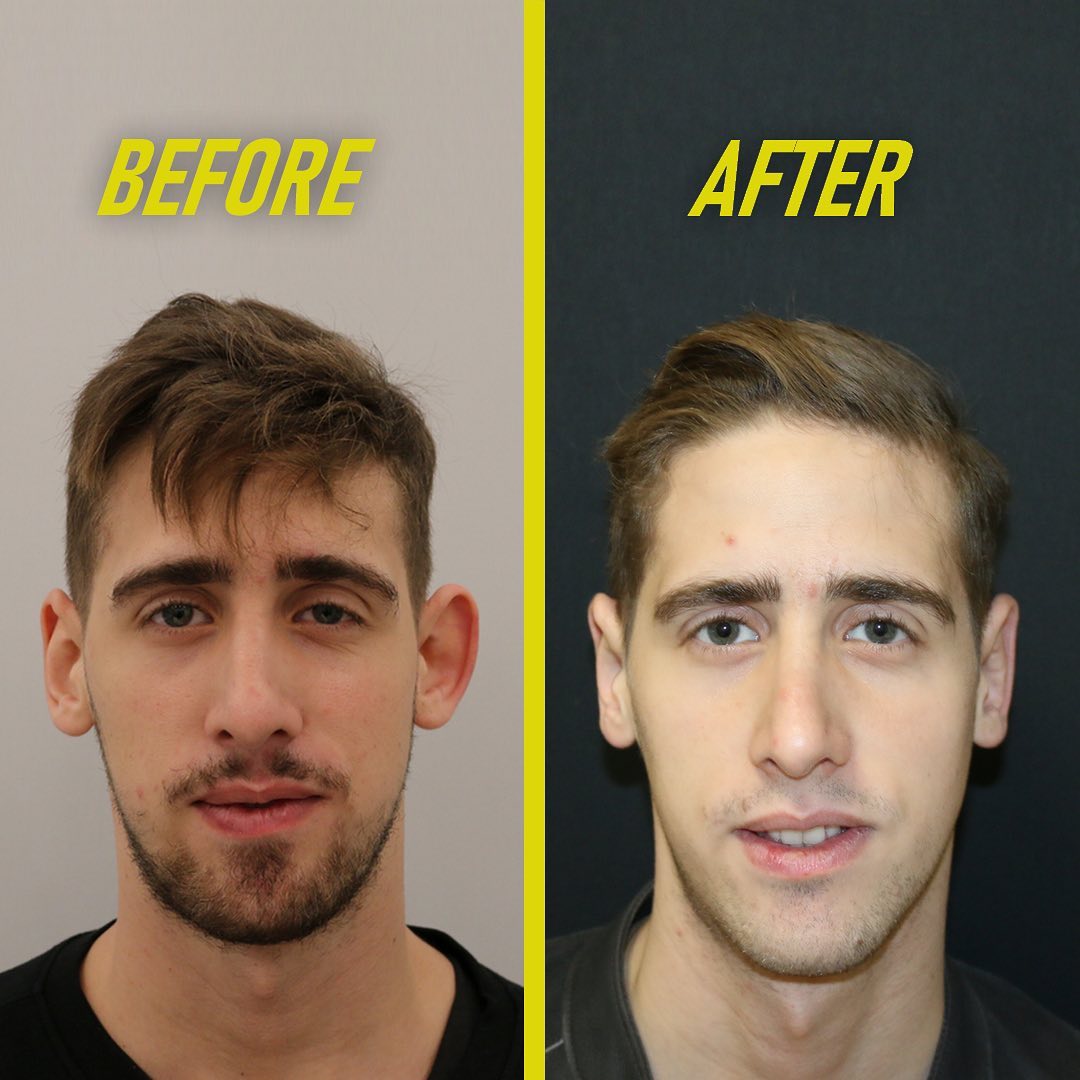
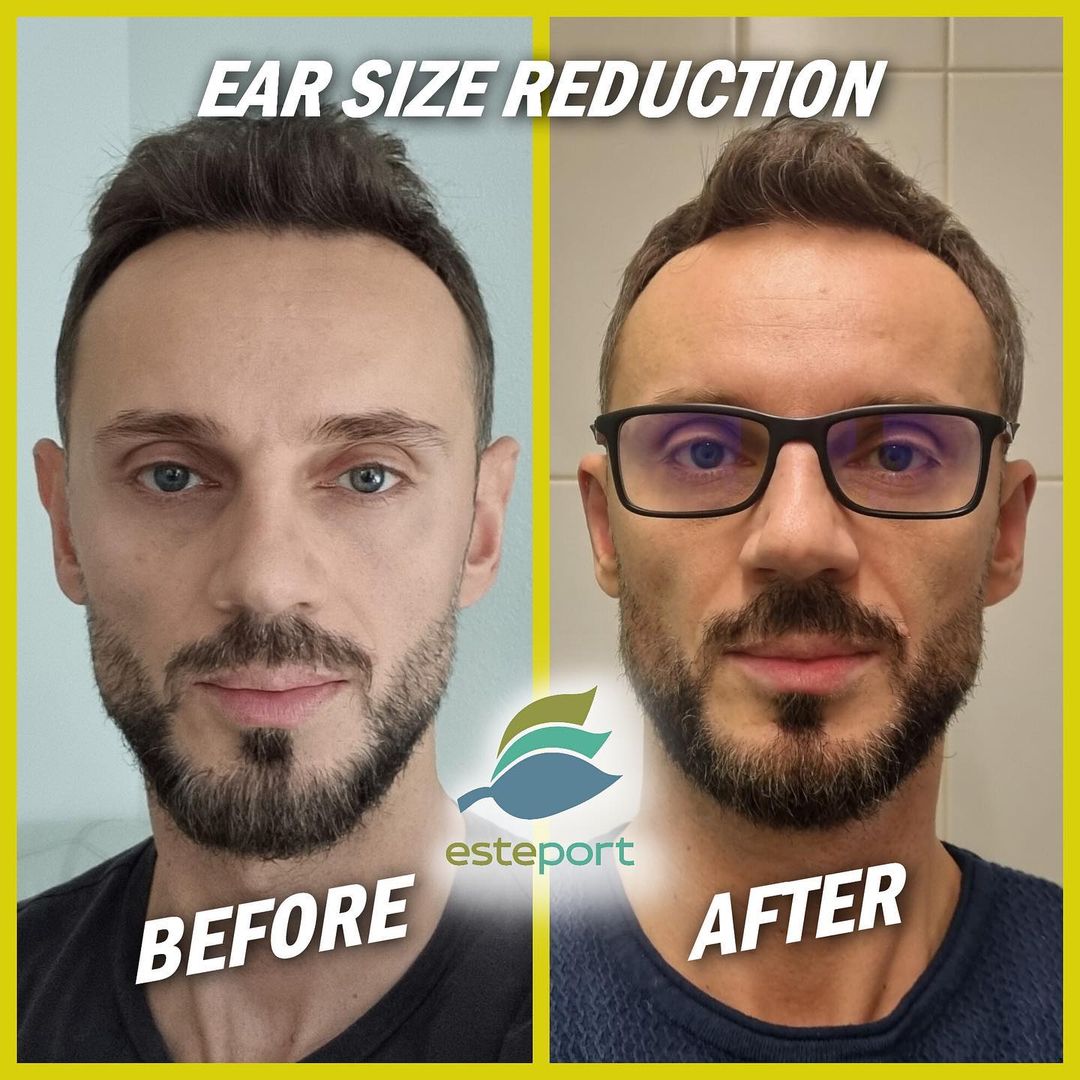
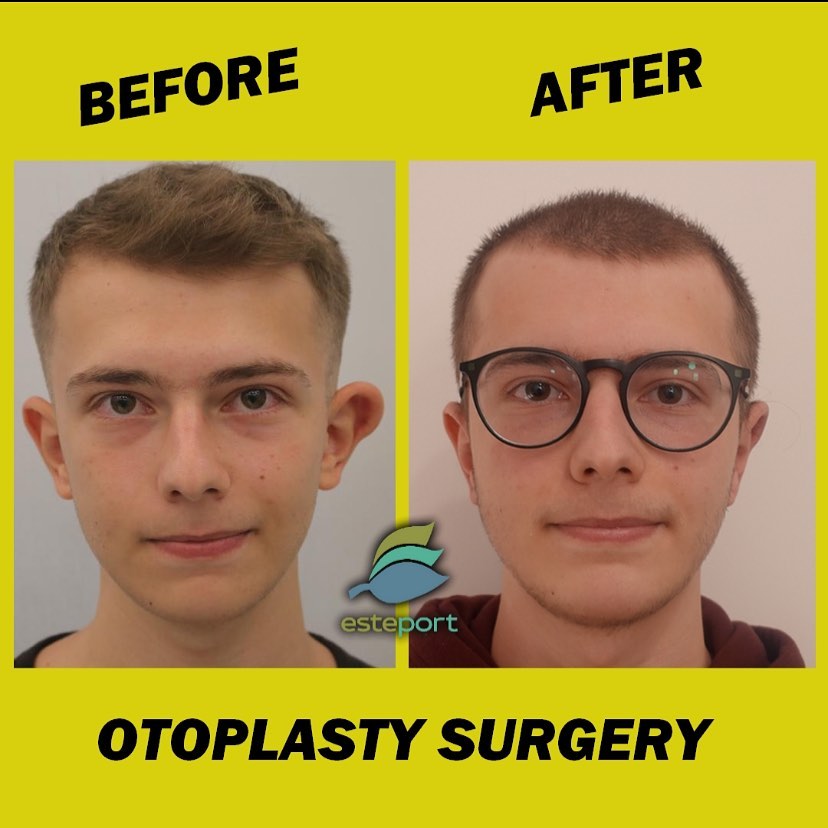
What is Non Surgical Otoplasty?
Non-surgical otoplasty is a cosmetic procedure that aims to reshape or reposition the ears without the need for surgery. This is achieved using various non-invasive techniques, such as injectable fillers, to alter the shape, size or position of the ears. This procedure is ideal for people who want to improve the appearance of their ears but do not want to undergo surgery or experience the associated downtime and recovery. Non-surgical otoplasty can also be used to correct minor asymmetry and other cosmetic issues of the ears.
How Does Non-Surgical Otoplasty Work?
The specific techniques used in non-surgical otoplasty vary depending on the individual’s needs and the practitioner’s preferences. Some of the most common techniques include:
- Injectable fillers: Dermal fillers like hyaluronic acid or calcium hydroxyapatite can be injected into the ear to reshape it, fill in depressions or contour irregularities, and create a more symmetrical appearance.
- Thread lifts: A thread lift involves inserting tiny threads beneath the skin and using them to lift and reposition the ear. This technique can be used to correct a range of cosmetic concerns, including sagging lobes, asymmetry, and protrusion.
- Laser therapy: Laser therapy can be used to reshape the ear by heating and reshaping the cartilage. This technique is particularly effective for correcting protruding ears.
Benefits
Non-surgical otoplasty offers several benefits over traditional otoplasty, including:
- No incisions or anesthesia: Non-surgical otoplasty is performed using minimally invasive techniques that don’t require incisions or general anesthesia.
- Little to no downtime: Most patients can resume their normal activities immediately after non-surgical otoplasty, although some swelling or bruising may be present for a few days.
- Less risk of complications: Non-surgical otoplasty is generally safer than traditional otoplasty, as there is less risk of infection or other complications.
- Immediate results: The results of non-surgical otoplasty are visible immediately, although they may improve over time as swelling subsides.
Potential Risks
While non-surgical otoplasty is generally considered safe, there are some potential risks and While non-surgical otoplasty is generally considered safe, there are some potential risks and complications to be aware of. These can include:
- Swelling, bruising, or redness: These are common side effects of non-surgical otoplasty, but should subside within a few days.
- Infection: Although rare, there is a small risk of infection with any cosmetic procedure.
- Nerve damage: Non-surgical otoplasty involves injecting or manipulating the ear tissue, which can potentially damage nearby nerves and cause temporary or permanent numbness.
- Unsatisfactory results: Non-surgical otoplasty may not achieve the same dramatic results as traditional otoplasty, and there is a chance that the results may not meet your expectations.
Candidates
Non-surgical otoplasty may be a good option for individuals who:
- Are unhappy with the shape, size, or position of their ears
- Want to avoid surgery and general anesthesia
- Have realistic expectations for the results of the procedure
- Are in good overall health and do not have any underlying medical conditions that could increase the risk of complications
Ear Pinning Turkey : Consultation and Preparation
Before undergoing non-surgical otoplasty, you will typically have a consultation with the practitioner to discuss your goals and expectations for the procedure. The practitioner may also examine your ears and review your medical history to ensure that you are a good candidate for the procedure.
In preparation for the procedure, you may be advised to avoid certain medications or supplements that could increase the risk of bleeding or bruising. You should also plan to arrange for someone to drive you home after the procedure, as you may be feeling a bit groggy or disoriented.
RELATED: Otoplasty Surgery
Procedure
The specific technique used in non-surgical otoplasty will depend on the individual’s needs and the practitioner’s preferences. In general, the procedure is performed on an outpatient basis and can be completed in as little as 30 minutes.
Injectable fillers are typically administered using a small needle, and the practitioner will work carefully to inject the filler into the ear in a way that achieves the desired shape and contour. Thread lifts involve inserting small threads under the skin and using them to lift and reposition the ear. The threads are typically left in place to provide ongoing support and lift to the ear tissue. Laser therapy involves using a special laser to heat and reshape the cartilage in the ear, resulting in a more symmetrical appearance.
Recovery and Aftercare
After non-surgical otoplasty, you may experience some mild swelling or bruising around the injection site. This is normal and should subside within a few days. You may also be advised to avoid touching or rubbing your ears for a few days, and to avoid strenuous exercise or activity for at least 24 hours after the procedure.
Results
You’ll see the effects of non-surgical otoplasty right away, and they might even get better as any puffiness or marks fade. How long the good results last depends on the exact method used and how your body reacts to it.
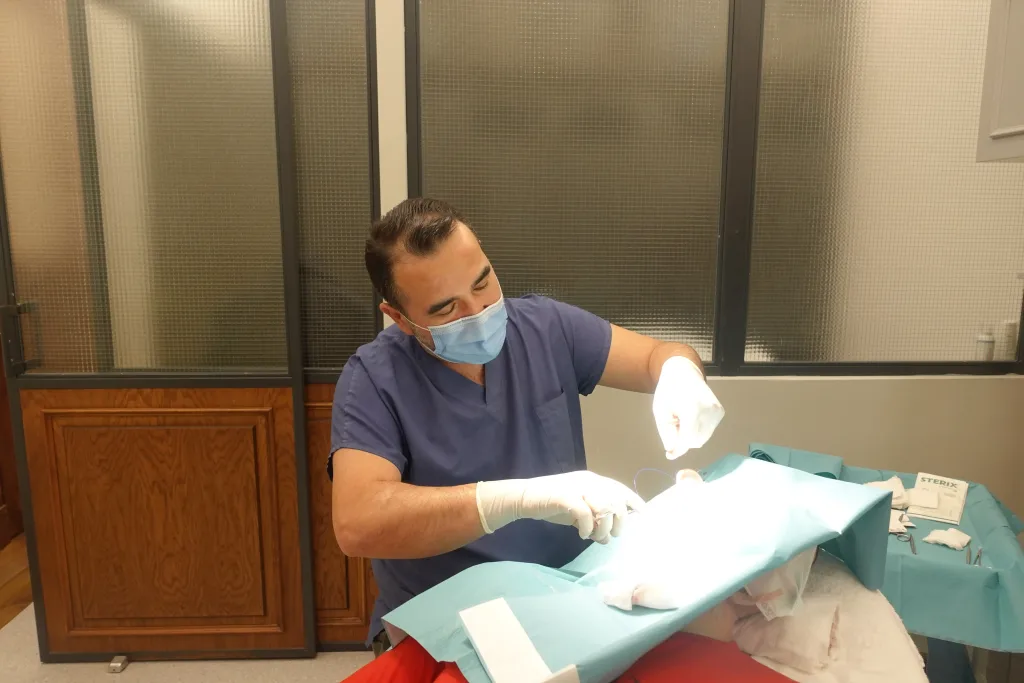
Finding a Qualified Practitioner
When considering non-surgical otoplasty, it’s important to find a qualified practitioner who has experience and expertise in the specific technique you’re interested in. Some tips for finding a qualified practitioner include:
- Researching online reviews and ratings for local practitioners
- Asking for recommendations from friends, family members, or your primary care physician
- Checking the practitioner’s credentials and certifications
- Scheduling a consultation to discuss the procedure and ask any questions you may have
RELATED: Earlobe reduction surgery
Alternatives to Non-Surgical Otoplasty
While non-surgical otoplasty can be an effective way to reshape the ears without surgery, there are some alternatives to consider as well. These can include:
- Traditional otoplasty: This involves making incisions behind the ear and removing cartilage to reshape the ear. While more invasive than non-surgical options, traditional otoplasty can provide more dramatic results.
- Ear molds: These are custom-made inserts that are worn inside the ear to reshape the tissue and correct protrusion or asymmetry.
- Hair styles: Certain hairstyles can be used to hide the appearance of protruding or asymmetrical ears.
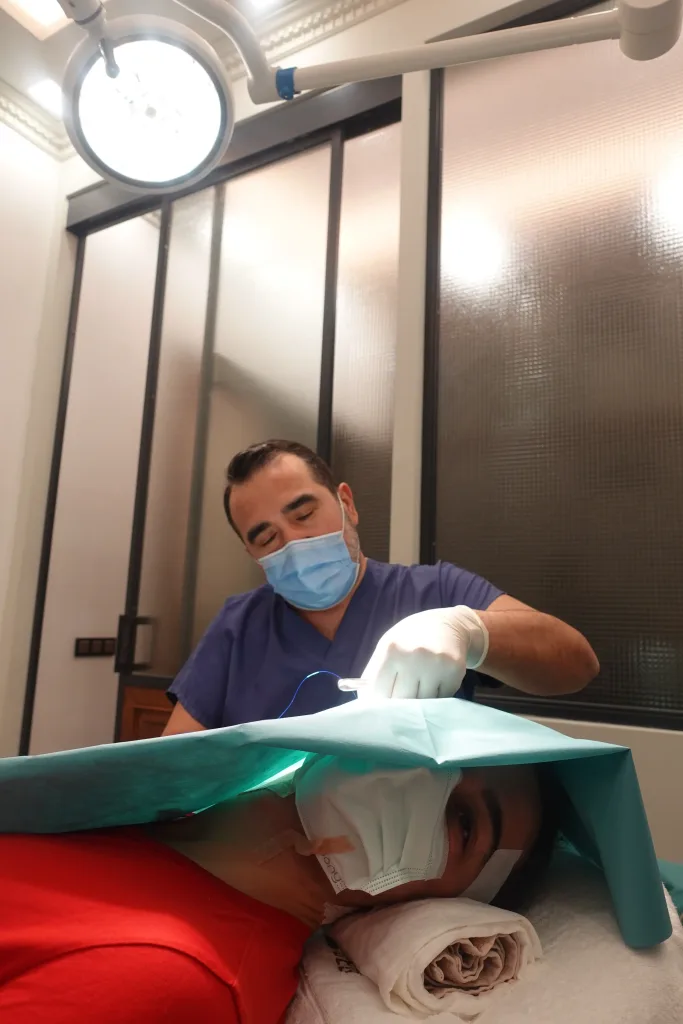
Why for Non-Surgical Otoplasty Should I choose Turkey?
Turkey has become a hotspot for non-surgical otoplasty, and here’s why. First, it has a lot of skilled experts in the field. They are well-trained in the latest methods and are known for giving results that look natural.
Next, getting non-surgical otoplasty in Turkey is usually cheaper than in many other places. This makes it a great choice for those seeking top-notch care without the hefty price tag.
Also, Turkey is a big name in the medical tourism sector. Many people from around the world come here for various cosmetic and medical treatments. The country has good facilities to help medical tourists, including modern clinics, English-speaking staff, and easy travel setups.
But remember, wherever you decide to get the procedure, research it and the person who will do it well. Choose someone experienced and who makes you feel safe and sure about their skills.
How often does otoplasty fail?
Otoplasty, or cosmetic ear surgery, generally has a high success rate when performed by experienced and qualified surgeons. However, as with any surgical procedure, there is a risk of complications or unsatisfactory results. The exact rate of failure or complications in ear surgery Turkey isn’t universally defined, as it can vary based on various factors, but it’s generally considered to be low. Some potential issues that can arise include:
- Asymmetry: One of the more common issues is asymmetry between the ears post-surgery. While some natural asymmetry is normal, significant imbalance can be considered a failure.
- Overcorrection or Undercorrection: In some cases, the ears may be pinned back too much (overcorrection) or not enough (undercorrection), leading to dissatisfaction with the results.
- Scarring: Although scars are typically hidden behind the ear, there can be instances of noticeable scarring, which might be considered undesirable.
- Infection and Healing Issues: Like any surgery, there’s a risk of infection or poor wound healing. These complications can affect the final outcome.
- Recurrence: There is a small chance that the ears may gradually return to their pre-surgery position.
- Patient Satisfaction: Even if the surgery is technically successful, some patients may have expectations that are not met, leading to a perception of failure.
To minimize the risk of complications and increase the likelihood of a satisfactory outcome, it’s important for patients to:
- Choose a qualified, experienced plastic surgeon, ideally one who specializes in facial procedures.
- Have realistic expectations and a clear understanding of the potential outcomes.
- Follow postoperative care instructions carefully to ensure proper healing.
If a patient is dissatisfied with the results of an otoplasty, revision surgery may be an option, depending on the specific circumstances. It’s important to discuss any concerns with the surgeon, who can provide guidance on the best course of action.
Clinic View ve 360°
Our place on the map
FQAs
Is Turkey safe?
Yes, non-surgical otoplasty in Turkey is mostly safe. It’s best to pick a well-known expert to do it. This way, you’ll be happy with the safe and good results.
How many days should I stay in Istanbul?
The procedure takes just an hour. You’ll need a check-up 2 days later. Then, you can go back home. A total of 4 days is sufficient.
Will it hurt during the procedure?
No, it won’t. Your ear will be numbed before the procedure, so you won’t feel a thing.
How many days will I need to wear the hair band?
You will need to wear it day and night for the first 3 days after the procedure. For the next 2 weeks, you will only need to wear it while sleeping. After that, there is no need to wear it. We will provide the hair band at our clinic, and you won’t have to pay any additional fees.
Can I return to work immediately?
Yes. You can return to desk jobs from the 3rd day onwards. We only ask that you protect your ears from physical impacts to prevent the stitches from coming undone. This precaution should be maintained for about a month on average.
What happens if there is an opening afterwards?
There’s less than a 1% chance of an opening after the surgery. But don’t worry, if you’re one of the rare cases and you still trust Dr. Ali Mezdeği, he will redo the surgery at no extra cost.




I am interested in thread lifting technique when can I do it ?
Hello, You can write to our whatsapp lines for an appointment. +905432413241